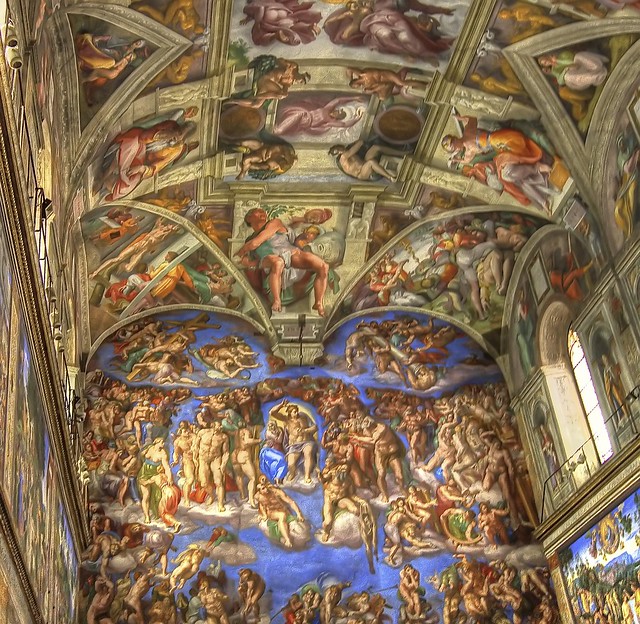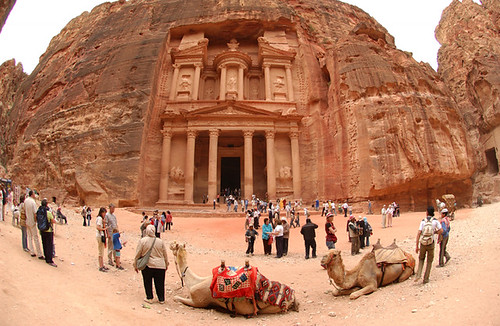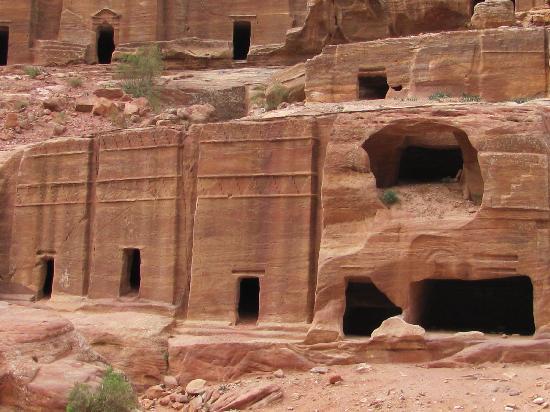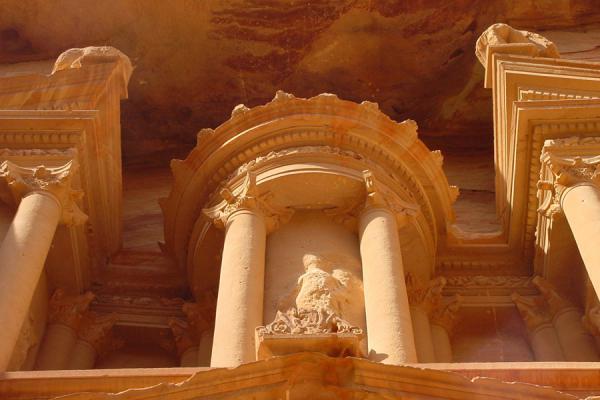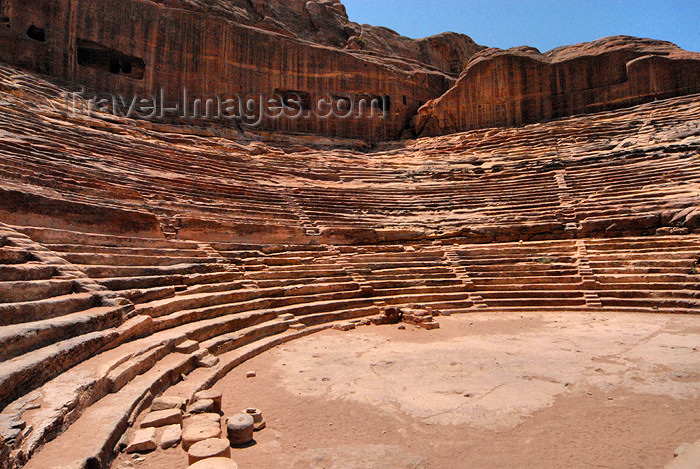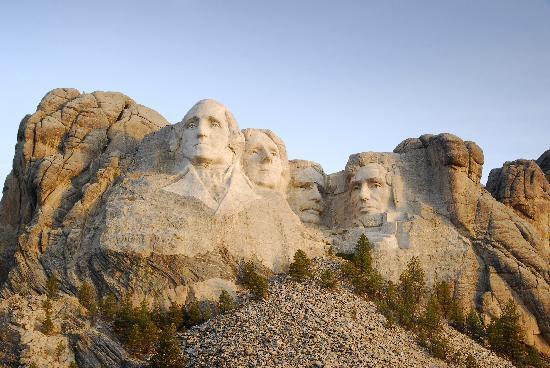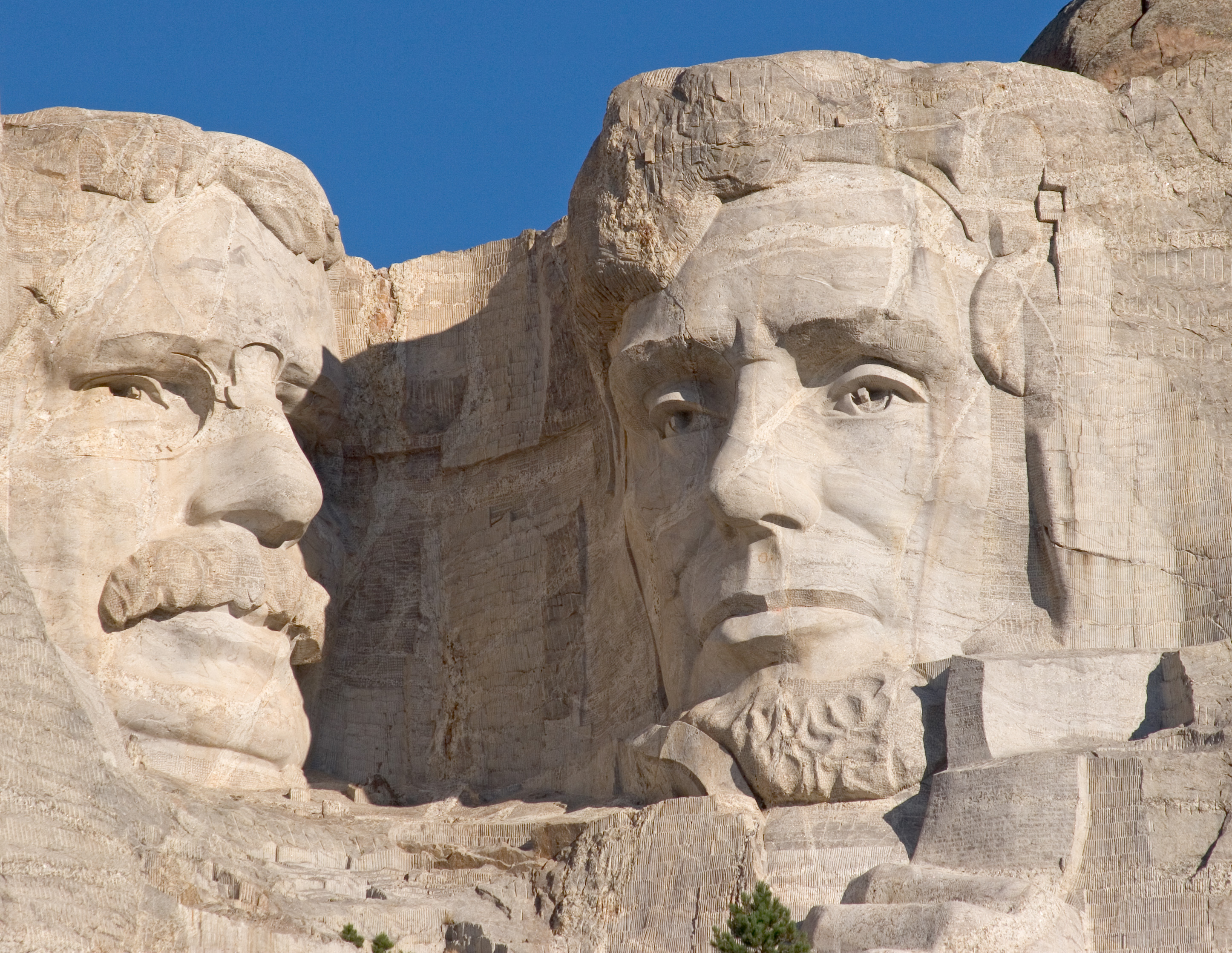
The Sistine Chapel is not just about Michelangelo. It is a collection of art from the minds and hands of other Italian painters. The history of the Sistine Chapel dates back to the 1400s when the Pope at that time, Sixtus IV della Rovere, opted Capella Mana renovated. The results are the different paintings and false drapes that means not only beauty, but also history. Among the most popular painters who worked include Pietro Perugino, Domenico Ghirlandaio, and Sandro Botticelli, and Pier Matteo d'Amelia, who painted the sky full of stars. It was the August 15, 1483, when Michelangelo Buonarroti took the responsibility to modify some of the designs of the Sistine Chapel, on the initiative of Julius II della Rovere, nephew of Sixtus IV.
The Ceiling
The greatest art piece of the Sistine Chapel would probably be its ceiling. However, if not for the cracks that could have been effects of the excavation, we will not be able to appreciate the most magnificent work of Michelangelo. The tale of the ceiling is quite enthralling. It seems like God planted desire in Michelangelo’s heart. It should have just been a mere visual representation of the 12 Apostles. Feeling dissatisfied, though, Michelangelo, with the full permission of Julius II, decided to change everything. If you will take a good look on the different depictions on the ceiling of the Sistine Chapel, you’ll know that it is actually composed of the 9 central stories that make up the Genesis, such as the Fall of Man, the story of Noah, and the Story of Creation. The painting usually starts at the entrance wall of the chapel.
The Last Judgment
After the Sack of Rome and before the start of the Council of Trent, Michelangelo worked on the Last Judgment, a huge mural occupying the entire wall at the back of the Sistine Chapel altar. It was a representation of the coming of Christ and the day of damnation. It showed the various nude souls descending into hell or ascending into heaven after they have faced clear judgment from Christ.
Looking at the Last Judgment, you will probably not feel awed of the entire backdrop but of the entire message it hopes to convey. It displayed the great reverence of the people to the ultimate power of God. The painting had been controversial, however, after Cardinal Carafa thought that it was very immoral and obscene, considering that the images were deliberately showing their genitals. He ordered the removal of the fresco, which could have been pushed through if not for the insistence and persistence of Michelangelo. To tame down its effect on the onlookers, the genital as were then later “covered” by Daniele da Volterra.
Touring the Chapel
There are many Italian tours that include visitation to the Sistine Chapel. You can even simply choose to tour the Vatican Museums, and definitely, you will land yourself inside the chapel. Normally, the tourists will arrive inside the chapel passing through the back portion of the altar. Then, they will observe the chapel until they can reach the entrance of the church. This will give them better opportunities to study and marvel at the different masterpieces surrounding and within the chapel. Nevertheless, before you can enter the chapel, you need to have tickets or entrance passes, which you can possibly get at the gates.
Whiling Away at the Gorgeous Vatican Gardens
There’s one garden that will remind you that there will always be a special place you can run to whenever you feel troubled, but it doesn’t take the fact that its overall design is more than enough to make you feel so blessed for the rest of your life. Such can be the simple message you will get once you get into the Vatican Gardens.
A tour to the Vatican Gardens can take up to 3 hours. By now, you probably have a good idea of just how vast and big it is. In fact, it covers 1/3 of the entire land area of the Vatican City, the smallest country in the entire world. Walking through the various types of foliages means going back on the history that span for more than 2 centuries.
A Look-back on the Gardens
The history of the Vatican Gardens can be traced back on the times when it was then a large orchard and vineyard that’s part of the Apostolic Palace. It used to be surrounded by walls until it was torn down, and two courtyards emerged. They were called the Pine Cone, or Pigna, and the Belvedere. There are two reasons why the gardens were created. First, Nicholas V wanted to have a venue for their papal court ceremonies. He also liked something that would give him some form of entertainment.
Design of the Gardens is the same text of Vatican Gardens
Today, anybody can visit the Vatican Gardens, provided that they choose to take a private guided tour. Normally, it will be opened at 11:00 a.m., every Tuesday, Thursday and Saturday between March and October. For the remaining months, it will be accessible every Saturday, on 11:00 a.m.
The Vatican Gardens is like going through another kind of world a beautiful one as expressed by the pair of small arches that can be located at the back area of the First Martyrs Courtyard. There’s a 2-mile Renaissance Wall, which is now being occupied by the oval piazza and St. Peter’s Basilica. You can also find the world-famous Sistine Chapel, Vatican Museums, and other offices totaling almost 10,000 rooms.
The Different Species Found in the Gardens
Plants are not all Italian. As a matter of fact, it’s like taking a stroll into the different natural flora of the world, as almost every country is well-represented in the Vatican Gardens. You will be able to observe North America’s maples, evergreen magnolia, and plane trees; Lebanon’s cedars; Japan’s sago palms; and Tasmania’s eucalyptus, to name a few. Over the years, churchmen and missionaries contributed their own finds in the garden. Fortunately, they have found a great home in the Roman soil.
One of the highlights of the tour will be reaching the slope found at the eastern portion of the Vatican Hill, which was then considered to be infested with wild snakes by the ancient Romans. However, it’s also the perfect venue for the Etruscans to practice their prophecies. The hill today is far from the untamed jungle you may have in mind. It’s now covered with well-tended beds, lawns, and shrubs. There are around 30 gardeners who take care of the garden full time, so you know that you’re not going to be disappointed once you decide to visit.






